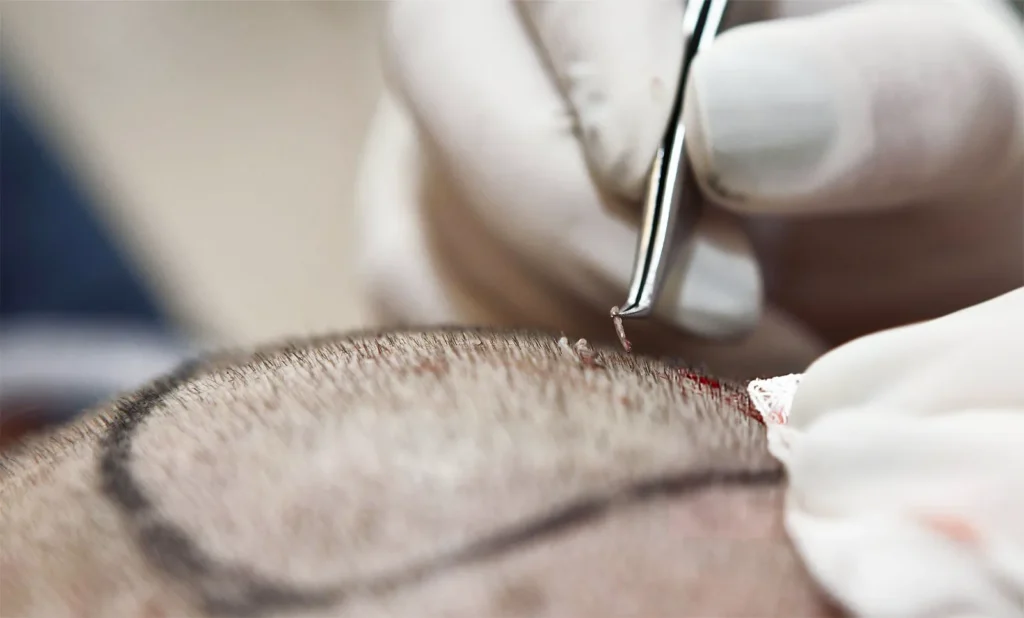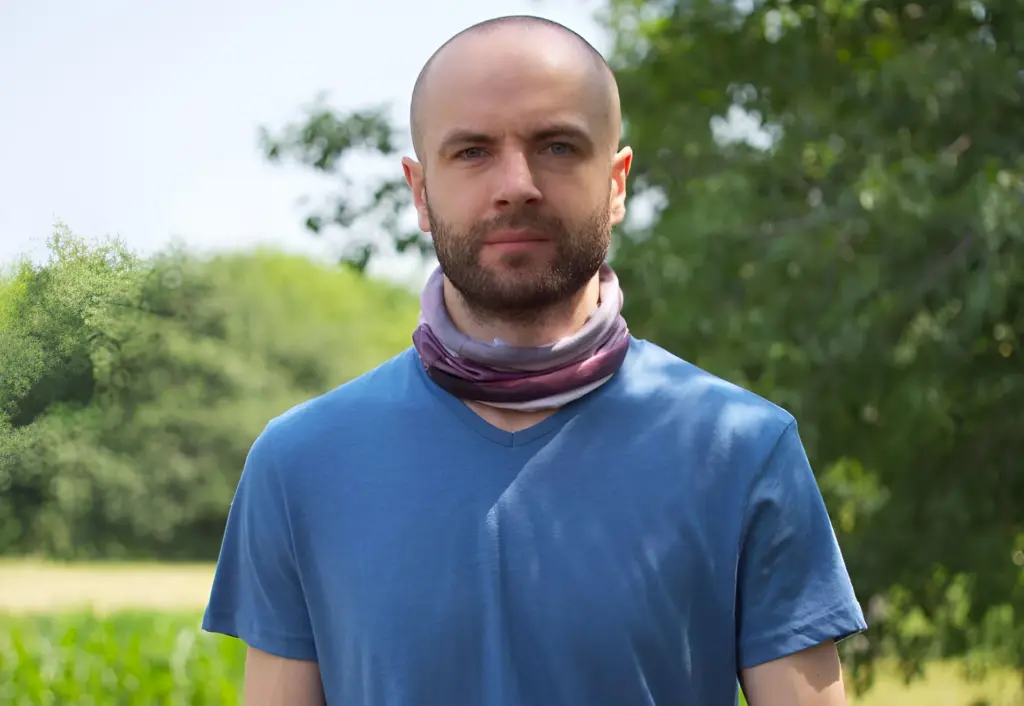Type and hit Enter to search
Experts in aesthetic surgery, dermatology, and beauty bring you the latest trends, research, and advice to help you make informed decisions about your appearance and health.
A web platform dedicated to aesthetic surgery, dermatology, and beauty, where expertise meets innovation, and your desires and needs become our mission. In a world where appearance and health go hand in hand, our platform leads the revolution, delivering the latest trends, research, and expert advice directly to you.
Our team consists of highly skilled professionals in the fields of aesthetic surgery and dermatology, committed to providing reliable information and guidance that will help you make informed choices about your appearance and well-being. We understand that every individual has unique needs and desires, which is why we approach each person with the utmost care and professionalism.
Powered by Aestetica Web Design © 2024
A Conversation with Your Scalp: Medications That Have Turned the Tide on Alopecia
On the stage where hair is treated like the king or queen of self-expression, alopecia plays the role of the uninvited antagonist. In this plot, where each follicle has its own story, the audience craves a hero – the best medicine for alopecia. This article takes you on a journey beyond the usual narratives, into a world where science and ancient wisdom collide, striving to uncover the elixir that promises to elevate your hair once again. From mysterious formulas to proven medical miracles, prepare for an odyssey through the labyrinths of alopecia treatment, where each twist brings new hope.
What is Alopecia?
Alopecia, or in layman’s terms, hair loss, is one of those topics that can bring tears to the eyes of modern-day heroes and heroines, and no wonder. Hair has been a symbol of strength, health, and even political stance since ancient times. From Samson’s strength in his locks to modern days where a hairstyle can say more than a thousand words, hair has been and remains much more than a mere ornament on our heads.
The Psychological Impact of Alopecia
Losing hair can be like losing a part of yourself, especially in a society that places great emphasis on appearance. The psychological impact of alopecia is not to be underestimated. It’s not just about people starting to feel less attractive, but their self-confidence can be seriously damaged, turning every look in the mirror into an epic battle between “me” and “my hair.” Some withdraw into themselves, avoid social activities, or even develop anxiety and depression. Yes, the battle for hair is often more than a cosmetic problem – it’s an emotional journey.
The Diversity of Alopecia: Types and Causes
Alopecia, that enigmatic phenomenon that makes people wonder where their hair has disappeared to, can be quite challenging to understand. The diversity of its forms and causes makes it like a labyrinth in which it’s easy to get lost. In addition to the aforementioned androgenetic alopecia and alopecia areata, there are other types that occur due to various factors.
Telogen Effluvium
Telogen effluvium is a type of hair loss where a large number of hair follicles enter a resting state, resulting in significant thinning of hair all over the head. This condition can be the result of severe stress, surgery, serious illness, or even sudden weight loss. If you imagine your hairstyle as an orchestra, telogen effluvium is like most musicians deciding to pause at the same time. The effect? Silence where there was once a symphony.
Cicatricial Alopecia
Cicatricial alopecia is hair loss where hair follicles are permanently destroyed and replaced with scar tissue. Various inflammatory processes, such as lupus or folliculitis, can cause this condition. Imagine it as the demolition of an old, charming building to make way for a parking lot. Once it happens, there’s no going back.
Each of these types of alopecia has its own specifics, but their common denominator is that they can significantly affect the quality of life. The causes can range from genetic predispositions, where your DNA is more inclined to write the script for “Hair Loss: The Hereditary Saga,” to external factors like environmental stressors and emotional turmoil. Hormonal changes, such as those during pregnancy, menopause, or due to conditions like polycystic ovaries, can also play a key role in triggering alopecia.
It’s important to note that while some types of alopecia can be treated and hair can regrow, others are permanent. For example, in androgenetic alopecia, treatments can slow down hair loss or even stimulate its growth, but the genetic predisposition remains unchanged. On the other hand, alopecia areata, which can lead to complete hair loss on the scalp or even the entire body, can have phases of remission where hair grows back.
Through this diverse garden of alopecia types and their causes, one thing is certain: understanding your specific situation is key to finding the right strategy for managing the condition. Whether it’s a lifestyle change, medical treatment, or finding ways to mentally cope with hair loss, each path is unique. And with a little patience and the right approach, you may find your way through the labyrinth of alopecia with a smile on your face.
Diagnosis and First Steps
The first visit to a dermatologist or trichologist, experts in hair and scalp, is often experienced with a mix of hope and anxiety. It’s the beginning of a journey into the unknown, where every detail, from the clinic’s doorstep to the doctor’s gaze, is stored in memory. This initial stage of diagnosis can be quite diverse, depending on the individual symptoms and condition of each patient.
Detailed Diagnostics
This is not just a routine checkup; it’s the first important step in understanding the nature of the problem you’re facing. After initial questionnaires and conversations, where your medical history and specific symptoms are examined in detail, a physical examination of the scalp follows. This moment can be particularly sensitive for many, similar to the experience of a patient from Zagreb who practiced how to discreetly remove his cap. But remember, for experts, this is a daily occurrence; they are there to help, not to judge.
Various Examination Methods
Dermoscopy, a detailed examination of the scalp using a special magnifying glass, allows the specialist to see changes that are not visible to the naked eye. This can help detect early signs of alopecia and other scalp problems. In some cases, a scalp biopsy may be necessary, where a small tissue sample is taken for laboratory analysis. While it may sound intimidating, this procedure is quick and, with local anesthesia, mostly painless.
Expectations and Reality
Many patients come to this first visit with high expectations, hoping for a miracle solution that will immediately stop hair loss. However, it’s important to understand that the diagnosis process is just the beginning. Understanding the cause of alopecia can take time and patience, and treatment is often carried out through long-term strategies.
Communication with the Doctor
During this first visit, open communication with the doctor is key. Don’t be afraid to ask questions and express your concerns. Honest conversation can help set realistic treatment goals and build trust between you and your doctor.
Psychological Aspect
Don’t forget the emotional aspect of this experience. Feelings of discomfort, fear, or even shame are common, but remember that you have taken an important step toward solving the problem. Many clinics and offices also offer psychological support or counseling for those who are struggling to cope with hair loss.
This first step, although it may cause fear and nervousness, is an important part of the journey toward understanding and managing alopecia. As the patient from Zagreb eventually realized, the cap may need to be left in the waiting room, but we can try to leave our fears and prejudices along with it. With professional help and personal determination, the path to a solution becomes less daunting.
Myths and Truths About Alopecia
Myths about alopecia are like urban legends – everyone has a story. “If you wear a cap often, you’ll definitely lose your hair” or “just relax, and your hair will grow back.” Ah, if only it were that simple, dermatologists would be unemployed, and cap manufacturers would go bankrupt. The reality is, unfortunately, more complicated. While stress can affect hair loss, alopecia requires a thorough treatment approach that includes both medical and lifestyle changes.
Experiences with Alopecia
Zagreb, a city with a thousand-year history, is home to many stories about alopecia. One such story comes from Ivan, who first came for a checkup with high expectations. While waiting his turn, he observed the pictures on the clinic walls showing “before” and “after” images of patients. When his turn came, he smiled and told the dermatologist: “I want to look like Brad Pitt after we’re done.” The dermatologist smiled back: “We do wonders here, but for Brad Pitt, you might need a little more than hair treatment.”
This introductory stop on our journey through the world of alopecia gives us the foundation for understanding how alopecia is not just an aesthetic problem, but an emotional and psychological experience that affects many aspects of an individual’s life. As we prepare to explore further treatments and experiences, let’s not forget the humor and lightness that can help us on this journey.
Arsenal of Treatments – How to Fight Alopecia
When you’re faced with alopecia, realize that you’re actually the main character in an action movie where your mission is to regain lost hair. Fortunately, your arsenal of treatments is extensive and diverse, readily available to guide you through this adventure.
Ritlecitinib (Litfulo) – A Drug for Alopecia Areata
In a world where the fight against alopecia is gaining more and more attention, the emergence of the drug Ritlecitinib, better known by its trade name LITFULO, has opened new doors of hope for those facing severe forms of this condition. This innovative drug, backed by the pharmaceutical giant Pfizer, represents a revolutionary step in the treatment of alopecia areata, an autoimmune disease that causes significant hair loss.
Alopecia areata is characterized by the immune system attacking hair follicles, causing them to be lost and resulting in hair loss. Unlike normal conditions, where hair is protected from immune system attacks, this disease reveals a weakness in the body’s defense mechanism. Ritlecitinib, however, goes to the heart of the problem by inhibiting certain proteins within immune cells, thus preventing their aggressive reaction towards hair follicles.
The approval of Ritlecitinib for medical use in the United States in June 2023, in the European Union in September of the same year, and in Canada in February 2024, marks a significant advancement in available treatments for alopecia. Through the second and third phases of clinical trials, LITFULO has shown promising results, reversing up to 80% of hair loss on the scalp in almost a quarter of all patients. This statistic not only sparks hope among those struggling with alopecia but highlights LITFULO as one of the few treatments that are both effective and well-tolerated by a significant number of people.
Dr. Brittany Craiglow from Yale University emphasizes the importance of LITFULO as a treatment particularly relevant for younger patients experiencing significant hair loss. The fact that alopecia can develop at any age, with symptoms most often appearing during teenage years, twenties, or thirties, makes LITFULO a key player in addressing this problem.
While the mechanism of LITFULO’s action on hair growth has not yet been fully elucidated, preliminary results and scalp biopsies suggest that the drug reduces the overactive immune response that triggers hair follicle inflammation. This mechanism, while providing a solution for hair loss, also carries the potential risk of a weakened immune system function, making users more susceptible to infections and diseases.
With a recommended daily dose of 50 milligrams, LITFULO represents a significant advancement in alopecia treatments. While the scientific community and patients eagerly await more research to clarify long-term effects and potential risks, current results offer a light at the end of the tunnel for those battling this challenging condition. As the medical community moves forward, LITFULO stands as a testament to innovation in the fight against alopecia.
Clinical Treatments for Alopecia: From Medications to Laser Therapy
Hair loss can be a frustrating and emotionally draining condition. Fortunately, developments in medical science and dermatology have brought about a range of treatments that promise relief and potential recovery. Here are some of the most popular clinical treatments and medications that have proven effective against various forms of alopecia:
Minoxidil: A topical solution, also known by the brand name Rogaine, is one of the most well-known treatments for androgenetic alopecia (male and female pattern hair loss). It is applied directly to the scalp twice a day. Minoxidil can stimulate hair growth and slow down hair loss, but its results vary from person to person.
Finasteride: This oral medication, most commonly known by the brand name Propecia, is primarily used to treat male androgenetic alopecia. It works by inhibiting the production of dihydrotestosterone (DHT), a hormone that is linked to hair loss. Although effective, finasteride can have side effects, including sexual dysfunction.
Dutasteride: Similar to finasteride, dutasteride is another inhibitor used to reduce DHT production in the body. It is not formally approved for alopecia treatment in many countries, but it is used off-label with some success.
Laser Therapy: The use of low-level laser therapy (LLLT) for hair growth stimulation is an increasingly popular method. Laser combs and caps can improve circulation and stimulate hair follicles to enter the growth phase.
Steroid Injections: For alopecia areata, an autoimmune form of hair loss, corticosteroid injections directly into the areas of hair loss can help reduce inflammation and promote hair growth.
Platelet-Rich Plasma (PRP) Therapy: This relatively new treatment involves extracting the patient’s blood, centrifuging it to separate platelet-rich plasma, and then injecting that plasma into the scalp. PRP can stimulate hair follicle regeneration and promote hair growth.
Immunosuppressants: In cases where alopecia areata is caused by autoimmune reactions, certain immunosuppressive drugs can be used to control the body’s immune response.
Natural and Home Remedies: Many turn to natural treatments like castor oil, essential oils (such as lavender and mint oil), and dietary supplements (like biotin and omega-3 fatty acids) in hopes of promoting hair health and growth. While anecdotal evidence about these methods is positive, clinical evidence is limited.
It’s important to note that the effectiveness of these treatments varies depending on the individual and the type of alopecia. Also, each treatment can carry the potential for side effects, so it is crucial to consult with a qualified medical professional before starting any treatment. The final choice of treatment will depend on the specific goals, medical condition, and preferences of the individual.
Hair Transplant: Diary of a Follicle
Imagine a hair follicle that has just learned it will be moved from one part of the body to another. “Today is a big day,” the follicle begins its diary. “Moving from the background to the front line, from the back of the head to the top. I’m a bit nervous but excited. This is my chance to shine.” Hair transplantation is like an epic relocation, where each follicle gets a new chance to flourish in a new location, often with a better story to tell.
Natural and Home Remedies: Grandma’s Wisdom in a Modern Way
In a world where every problem seeks a high-tech solution, we shouldn’t neglect grandma’s wisdom that has stood the test of time. From castor oil that promises to give your hair rock star-worthy volume to the miraculous effects of aloe vera that soothes the scalp as if whispering, “Everything will be alright.” These natural remedies are like reliable neighbors who are always there to help, even if some of them come with questionable effectiveness.
Recovery and Care: The Path to Lush Hair
The road to recovery after alopecia treatment is a marathon, not a sprint. Patients from Zagreb share their stories of patience and perseverance, reminding us that caring for newly arrived hair is like nurturing a young seedling. From avoiding harsh chemicals and excessive styling to regular hydration and a nutritious diet, maintaining the results of treatment requires dedication. As one patient says, “After going through all these treatments, my hair isn’t just hair – it’s a trophy.”
Through this chapter on the arsenal of treatments against alopecia, we guide you through the variety of options available. Whether you opt for surgical procedures, clinical treatments, natural remedies, or a combination of everything, the key is finding the right mix that will help you regain not only your hair but also your self-confidence. Remember, each follicle has its own story, and yours has just begun.
Triumphs and Setbacks: Ups and Downs on the Road to Recovery
The fight against alopecia is often filled with ups and downs, and experiences with treatments vary from person to person. Some Zagreb residents have shared their success stories of hair recovery after long-term treatments, while others have experienced less successful attempts that have led to new challenges and disappointments. However, the common element of all these stories is the unwavering willpower and determination not to give up, regardless of the obstacles along the way.
Support and Community: The Importance of Support Groups
The importance of community and support groups cannot be overstated, especially in the context of battling alopecia. In Zagreb, numerous groups and forums allow people to share their stories, advice, and words of encouragement. These platforms have become key in the recovery process for many, providing a sense of belonging and understanding that is often difficult to find elsewhere.
Expert Advice vs. Patient Experiences: Finding a Balance
Navigating between expert advice and patient experiences can be tricky. While experts are a source of important medical information and treatment guidelines, the real experiences of patients provide a personal perspective that can be equally important. In Zagreb, many have found their balance by combining these two types of advice, using medical recommendations as a foundation while drawing strength and inspiration from the stories of others going through similar experiences. Through humor and camaraderie, the community in Zagreb shows that, although the path may be difficult, no one has to go it alone.
Commentary by Dr. Mikela Petković from Zagreb
Dr. Mikela Petković, a renowned dermatologist from Zagreb, has delved deeply into the topic of alopecia medications, providing her expert opinion on a subject that has long been in the focus of the medical community. “When we think about alopecia, we often forget its deep psychological impact,” Dr. Petković began. Her perspective is not limited to merely treating the surface symptoms but provides a comprehensive view of the complexity of the condition and its treatment.
According to Dr. Petković, the latest research in Zagreb has shown promising progress in the development of alopecia medications. “Recently, clinical trials in our city have uncovered a new generation of topical medications that target specific molecular pathways involved in hair loss,” she pointed out. This approach, based on precision molecular medicine, opens new doors in treatments, allowing for personalized therapy for patients.
Dr. Petković also emphasized the importance of an integrative approach in the treatment of alopecia. “We must not neglect the psychosocial aspects of alopecia. In Zagreb, we are working on developing patient support that includes psychological counseling along with medical treatment,” she added. This dual strategy not only addresses the physical aspects of hair loss but also the emotional ones, providing patients with holistic support on their path to recovery.
Speaking about specific medications, Dr. Petković highlighted minoxidil and finasteride as the cornerstones of current therapy. “Although these drugs have been in use for a long time and have shown some effectiveness, we are continuously researching new methods that could offer better results with fewer side effects,” she explained. For example, research focused on the Wnt/β-catenin signaling pathways or JAK-STAT signaling inhibitors promises to revolutionize the approach to alopecia treatment.
Furthermore, Dr. Petković shared her vision for the future of alopecia treatments in Zagreb. “I believe that the next big step will be in the application of gene therapy and CRISPR technology to target the root causes of alopecia,” she said. Such an approach could not only provide long-term solutions for hair loss but also reduce the need for prolonged medical therapy.
Dr. Petković concluded her commentary by emphasizing the importance of continued research and collaboration within the scientific community. “Only through joint efforts can we hope to find a permanent solution for alopecia,” she emphasized. Her opinion, deeply rooted in the latest scientific achievements and enriched by experience from practice, provides a new perspective on this complex topic, highlighting Zagreb as a city where active work is being done to find innovative solutions for the treatment of alopecia.
Biografija dr. Mikela Petković
Dr. Mikela Petković – Specijalist dermatologije i venerologije, zaljubljena u prirodan sjaj zdrave kože, otvorena, komunikativna, fokusirana na najnovija istraživanja i rješenja koja medicina nudi kada je u pitanju zdravlje kože.
Reference
Trichology and Trichiatry; Etymological and Terminological Considerations. Trüeb RM, Rezende HD, Dias MFRG, Uribe NC.Int J Trichology. 2022 Jul-Aug;14(4):117-119. doi: 10.4103/ijt.ijt_104_21. Epub 2022 Jul 16.PMID: 36081446





